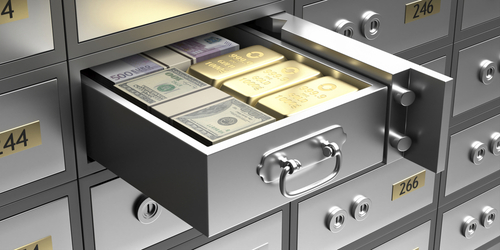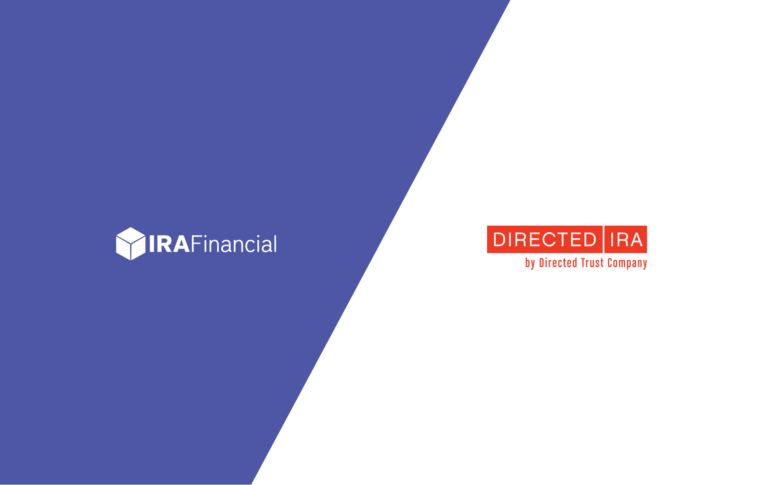IRA-eligible gold refers to specific types of gold that meet IRS standards, making them suitable for inclusion in a retirement account. This gold must have a purity of at least 99.5% and be in the form of approved coins or bars. In this article, we’ll explore the types of gold that qualify, the benefits of investing in IRA-eligible gold, and how to set up and manage a Self-Directed IRA. Please note that the terms, Self-Directed IRA, Precious Metals IRA, and Gold IRA can be used interchangeably in this context.
Key Takeaways
- IRA-eligible gold must meet strict IRS standards for purity, with a minimum of 99.5%, and includes specific coins and bars for compliance.
- Setting up a Self-Directed IRA involves selecting the right custodian, funding the account through various methods, and purchasing approved gold for storage in IRS-approved depositories.
- Investing in precious metals offers benefits such as diversification, inflation protection, and tax advantages, but also entails costs and risks associated with market volatility and liquidity.
Understanding IRA-Eligible Gold
IRA-eligible gold refers to specific types of gold that meet strict IRS standards for purity and other criteria, ensuring that the investment is not only valuable but also compliant with regulatory requirements. Gold must have a purity level of at least 99.5% to be IRA eligible. This high standard helps ensure that the gold content you invest in retains its value and meets the necessary criteria for inclusion in your retirement account.
The types of gold products that qualify for a Self-Directed IRA include gold bullion coins, bars, and rounds that comply with IRS regulations. Understanding these different forms of IRA-approved gold is essential for making informed investment decisions. Next, we explore the specific types of coins and bars that meet these stringent requirements.

Types of IRA Eligible Coins
IRA-eligible coins are specific gold coins minted by approved government mints that meet IRS purity standards.
Notable examples include:
- American Gold Eagle
- Canadian Maple Leaf
- United Kingdom sovereign coins
- French 20 Franc gold coins
- U.S. Liberty coins (which are not considered collectibles)
These coins must not only meet certain purity levels but also be in like-new condition to qualify for inclusion in a Gold IRA.
Types of IRA Eligible Bars
IRA-eligible bars are gold bars that:
- Adhere to IRS standards for Self-Directed IRAs
- Are produced by accredited refiners
- Meet stringent purity, weight, and quality criteria
- Are issued by reputable refineries
- Include IRA-eligible products and comply with the IRS regulations
Gold and other IRA-approved bullion bars are a popular choice for retirement investors thanks to their affordability and variety. Available in multiple forms, including gold, silver, and palladium, they come in sizes ranging from as small as 1 gram to as large as 100 ounces. To qualify for IRA inclusion, each bar must meet strict purity and weight standards and be securely stored in an IRS-approved depository.
Setting Up a Precious Metals IRA
Setting up a Precious Metals IRA involves several key steps:
- Select a Self-Directed IRA custodian. Unlike regular IRAs, which often limit investments to stocks, bonds, and mutual funds, an SDIRA allows you to include physical assets like gold.
- Fund your Precious Metals IRA through various methods, including contributions, transfers, or rollovers from existing retirement accounts.
- Purchase and store physical gold with an approved custodian once the account is funded.
Choosing the right custodian, such as IRA Financial, is crucial for ensuring compliance with IRS regulations and proper management of your Precious Metals IRA. Understanding the funding options available can help you maximize the benefits of your investment. We will delve deeper into these essential aspects.
Book a free call with a self-directed retirement specialist
- Review your self-directed retirement options
- Learn about investing in alternative assets
- Get all of your questions answered
Choosing the Right Custodian
Selecting the right custodian is a critical step in setting up a Self-Directed IRA for precious metals. Custodians can include banks, brokers, and specialized financial institutions that focus on Gold IRAs. These custodians handle the administrative and compliance tasks required for managing the plan, ensuring that your investment adheres to IRS regulations.
Self-directed retirement administrators can assist in selecting custodians and arranging storage for your IRA-approved gold, making the process smoother and more efficient.
Funding Your Precious Metals IRA
There are several ways to fund a Precious Metals IRA, and the right approach depends on your current retirement savings. The most common method is through a rollover from an existing retirement account, such as a 401(k), 403(b), or traditional IRA. A rollover allows you to move funds into your new Self-Directed IRA without triggering taxes or penalties, provided it’s done correctly.

Another option is a transfer from an existing IRA. This process is direct between custodians, meaning you never take possession of the funds, which helps ensure the transaction remains tax-advantaged. Some investors also choose to make new contributions, subject to annual IRS contribution limits, to steadily build their IRA over time.
By understanding these funding methods, you can choose the one that best aligns with your retirement goals while maintaining IRS compliance. Many investors find that combining a rollover or transfer with new contributions provides a balanced approach to growing their account.
Benefits of Investing in IRA Eligible Gold
Investing in IRA-eligible gold offers several compelling benefits that can enhance your retirement portfolio:
- Diversification: Gold can help balance investment risk by behaving differently than traditional assets like stocks and bonds.
- Hedge against inflation and economic uncertainty: Gold helps to preserve purchasing power during volatile times.
- Tax advantages: Gold IRAs provide tax benefits that can help maximize your retirement savings.
These benefits make gold a valuable addition to any retirement strategy. Let’s explore these advantages in greater detail, focusing on diversification, inflation protection, and tax benefits.
Diversification
Diversification is a key principle of effective financial planning, and gold plays a crucial role in achieving it. Gold often moves independently of stocks and bonds, providing a hedge against market volatility and economic uncertainty.
By including gold in your investment portfolio, you can reduce overall risk and enhance potential returns, making it a valuable asset for long-term investment strategies.
Inflation Protection
Gold has a long history of maintaining its value over time, making it an effective hedge against inflation. During periods of economic instability, gold typically performs well, preserving purchasing power and providing a safe haven for investors who hold gold and money.
This makes gold a key component of strategies aimed at protecting against inflationary pressures.
Tax Advantages
Investing in a Gold IRA offers significant tax advantages that can help you maximize your retirement savings. Traditional IRAs allow for tax-deferred growth, meaning earnings are taxed only upon withdrawal. Contributions to a may be tax-deductible, potentially lowering your taxable income for the year. On the other hand, a Self-Directed Roth IRA enables tax-free growth and withdrawals during retirement, providing substantial long-term benefits.
Storage and Security of IRA Eligible Gold

Proper storage and security of IRA-eligible gold are critical to maintaining its value and ensuring compliance with IRS regulations. Gold in an IRA must be stored at a facility that complies with IRS standards, known as an IRS-approved depository. These depositories offer secure storage and insurance coverage, protecting your investment from theft and damage.
Understanding the importance of IRS-approved depositories and the security measures they implement can give you peace of mind when investing in gold. The following subsections will explore these aspects in more detail.
IRS-Approved Depositories
IRS-approved depositories are essential for the secure storage of precious metals in an IRA, ensuring compliance with IRS regulations. These facilities must meet specific quality standards for the precious metals they hold and provide secure storage to protect against theft or damage.
Storing physical gold outside of a recognized depository could trigger distributions subject to taxation, making compliance crucial.
Security Measures
Approved depositories implement advanced security features to safeguard your investments. These include biometric access, 24/7 surveillance, and armed security personnel. Such stringent security protocols ensure that your gold assets are well-protected, giving you confidence in the safety of your investment.
Costs Associated with IRA Eligible Gold
Investing in IRA-eligible gold can be a smart diversification strategy, but it’s important to understand the costs involved. Unlike standard IRAs, Gold IRAs come with additional expenses tied to the management and storage of physical precious metals. These include custodial fees, storage fees, and transaction costs—all of which can impact your long-term returns.
Custodial Fees: Custodians typically charge an annual maintenance fee to cover account management and administrative services. Some use a flat-rate structure like IRA Financial, while others charge a percentage of the account value. These fees are necessary to maintain compliance and ensure your account is properly managed.
Storage Fees: Because physical gold must be kept in an IRS-approved depository, storage fees are an unavoidable expense. These can range from about $100 to over $500 annually, depending on your account size and whether you choose segregated or commingled storage. The fees help guarantee the security and protection of your gold holdings.
Transaction Costs: Buying or selling gold within your IRA may also incur transaction fees, which usually range from $10 to $100 per trade depending on the custodian. For what it’s worth, IRA Financial does not charge transaction fees! Factoring these costs into your investment strategy is key to managing your account effectively and maximizing returns.
By being aware of these expenses upfront, you can make informed decisions and better evaluate whether a Gold IRA aligns with your overall retirement strategy.
Risks and Considerations
While investing in IRA-eligible gold offers valuable benefits, it also carries certain risks that investors should carefully consider. Gold prices are subject to significant market swings, which can impact the overall value of your portfolio. Unlike stocks or bonds, gold does not generate income through dividends or interest, and this lack of cash flow can make liquidity more challenging. Understanding these risks is key to building a well-balanced retirement strategy.
Gold has a long history of price fluctuations. For example, between the early 1980s and 2006, gold prices hovered between $300 and $500 per ounce. By January 2024, however, prices had surged to over $2,000 per ounce. While this growth highlights gold’s potential, it also underscores the volatility that can directly influence the value of your Gold IRA.
Converting gold into cash within an IRA isn’t always straightforward. Market conditions may limit your ability to sell at the price you want, and liquidation often comes with additional costs such as transaction fees and custodial charges. These factors can slow down access to funds when you need them most.
By recognizing these risks, investors can make more informed decisions and weigh whether gold aligns with their broader retirement objectives.
Contribution Limits and Regulations
Managing a Gold IRA requires an understanding of both contribution limits and IRS regulations. For 2025, individuals under age 50 can contribute up to $7,000 to their IRA, while those age 50 and older can contribute up to $8,000, thanks to a $1,000 catch-up contribution. These limits are designed to encourage steady retirement savings while ensuring compliance with IRS rules.

As we touched out earlier, there are strict requirements regarding the purity and storage of gold in an IRA. Eligible gold must meet a minimum fineness of 99.5%, and all metals must be stored in an IRS-approved depository. Withdrawals taken before age 59½ are generally subject to a 10% early distribution penalty, along with regular income taxes.
By following these limits and regulations, investors can preserve the tax advantages of their IRA while ensuring their assets meet IRS standards. Staying compliant not only protects your retirement savings but also helps you maximize the long-term benefits of holding physical gold in your portfolio.
Summary
In conclusion, investing in IRA-eligible gold offers a range of benefits, from portfolio diversification and protection against inflation to significant tax advantages. By familiarizing yourself with the types of qualifying gold coins and bars, choosing a trusted custodian, and understanding associated costs and risks, you can make informed decisions that strengthen your retirement strategy. Gold’s unique qualities make it a powerful tool for preserving wealth and navigating economic uncertainty over the long term.
As you explore adding gold to your retirement portfolio, compliance with IRS regulations remains essential. From selecting IRS-approved depositories to staying within contribution limits and understanding key rules, every decision matters in maximizing the advantages of your Gold IRA. By carefully considering these factors, you can create a resilient, well-structured retirement portfolio built to endure for years to come.
Ready to Secure Your Retirement with Gold?
Take the first step toward diversifying and protecting your retirement portfolio with a Self-Directed Gold IRA. Our specialists guide you through funding options, IRS-approved custodians, and safe storage solutions—so you can invest confidently.
👉 Schedule a Free Consultation to explore how a Gold IRA can work for you.
👉 Confident and ready to begin? Open Your Account Today.
Frequently Asked Questions
What types of gold are eligible for a Gold IRA?
Gold eligible for a Gold IRA must meet the IRS purity standard of at least 99.5% and includes bullion coins, bars, and rounds. Ensuring compliance with these standards is crucial for the validity of your investment.
How do I fund a Precious Metals IRA?
You can fund a Precious Metals IRA by rolling over funds from a 401(k) plan or other defined benefit plans, transfer from an IRA or by making direct contributions to the plan.
What are the storage requirements for IRA-eligible gold?
IRA-eligible gold must be stored in an IRS-approved depository that adheres to rigorous quality and security standards. This ensures compliance and the protection of your investment.
What are the tax advantages of a Gold IRA?
A Gold IRA presents significant tax advantages, including tax-deferred growth in traditional IRAs and tax-free withdrawals in Roth IRAs. So long as the metals (or fund from the sale of them) are held inside the IRA, they are not taxable.
What are the risks of investing in a Gold?
Investing in gold presents risks including market volatility and potential liquidity issues due to fluctuating gold prices and the costs associated with selling gold assets. It is crucial to be aware of these factors before making an investment.



